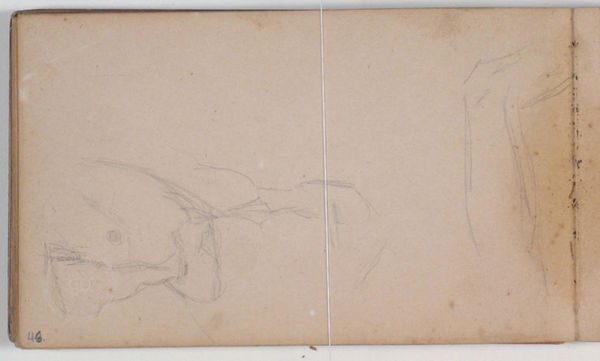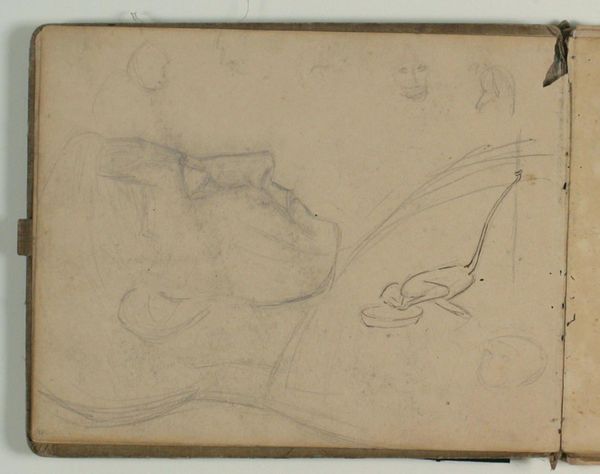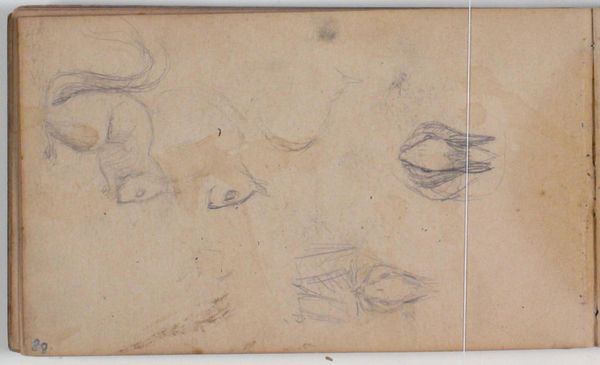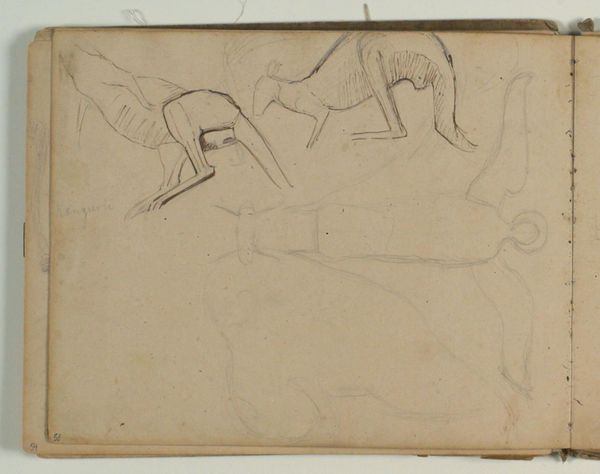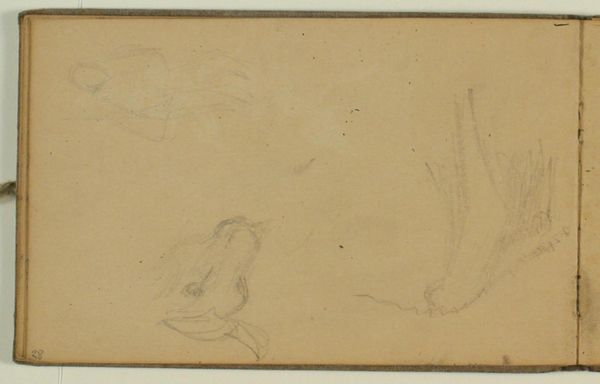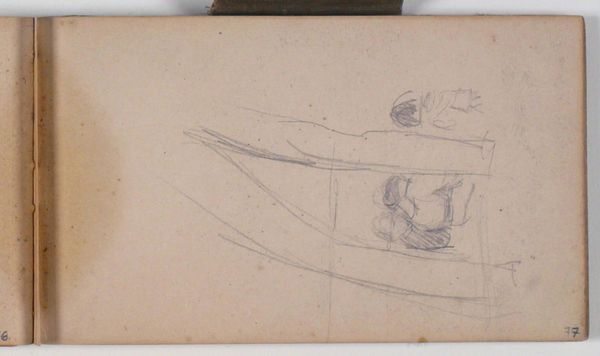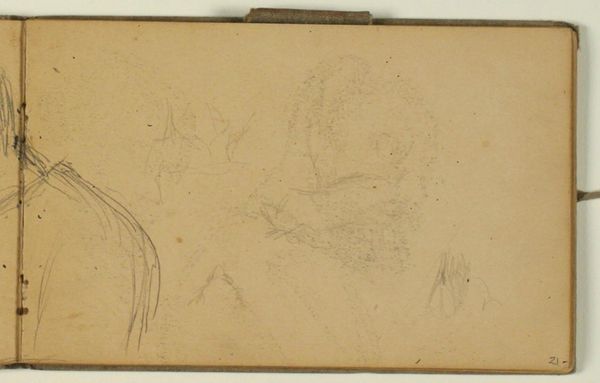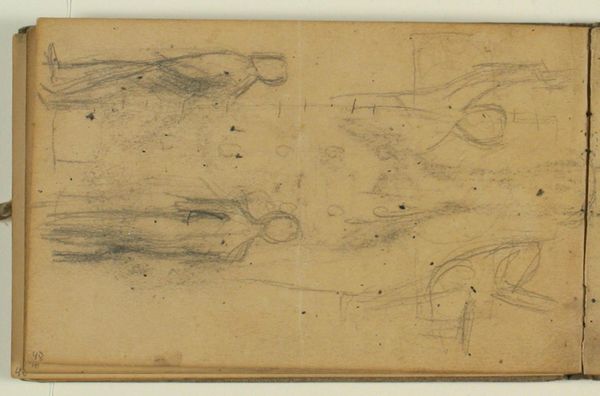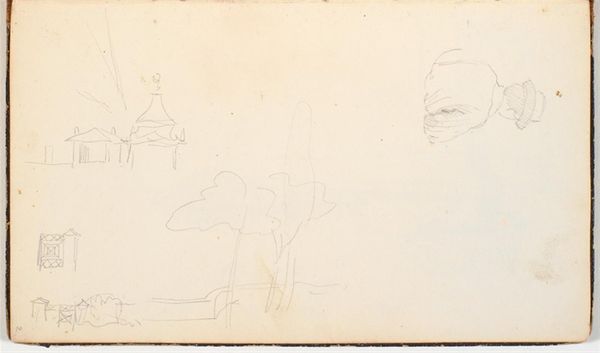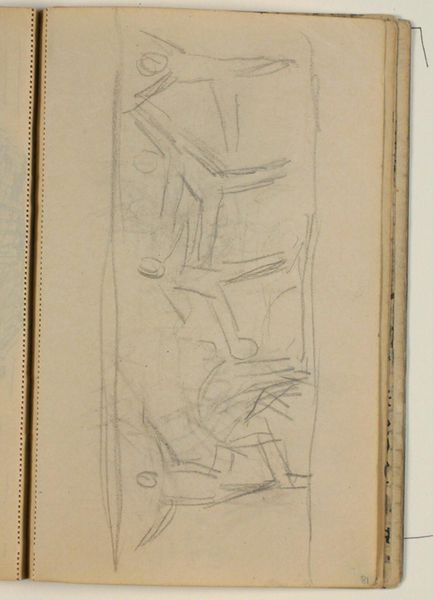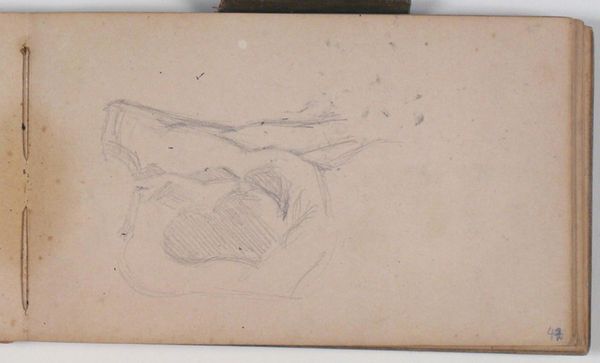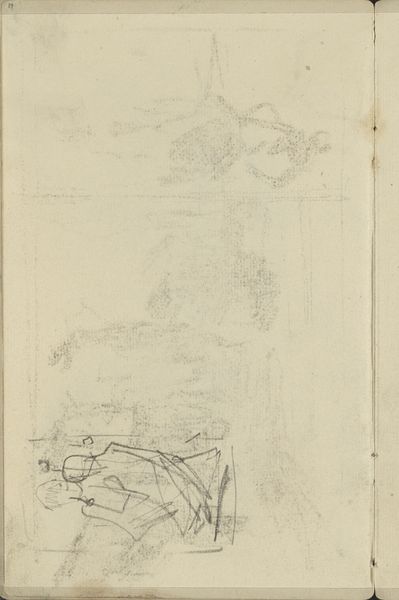
Studie efter maleri af Marias himmelkroning. "Giotto skole"; Museet i Bologna 1896
0:00
0:00
drawing, pencil
#
drawing
#
figuration
#
11_renaissance
#
pencil
Dimensions: 101 mm (height) x 168 mm (width) (bladmaal)
Curator: This is a pencil drawing by Niels Larsen Stevns, created in 1896. It's entitled "Studie efter maleri af Marias himmelkroning. 'Giotto skole'; Museet i Bologna," a study after a painting. It appears to depict figures, possibly religious, in a somewhat rough, sketch-like manner. What strikes you most upon seeing it? Editor: Its immediacy. You feel like you’re looking over the artist’s shoulder as he’s rapidly trying to capture the essence of the figures, with the emphasis appearing to be on form. Curator: The lines do have a searching quality. As a study, its function is to analyze the formal structures present within another artwork, allowing the artist to isolate components of a successful composition. It seems Stevns wanted to truly understand the spatial relationships at play within the original painting. Editor: I wonder about the implications of reinterpreting an earlier Renaissance piece, which would itself be steeped in social and religious codifications about power and hierarchy, such as divine right. By sketching it, he is making a pointed claim about the purpose of art as it transitions into the twentieth century. The lines may be searching, but they reflect a search for something relevant, for him, within these established stories and traditions. Curator: An interesting reading! I think there is also merit in seeing his approach to line quality and tonal values here. By creating his own freehand drawing, Stevns uses a certain softness, almost a gentleness. The original could have been quite bombastic, full of strong pigment and hard lines, to emphasize status. Instead, this translation presents a tenderness that transcends the traditional visual markers of hierarchical power. Editor: Indeed. The sketch emphasizes how, despite cultural and historical differences, it is empathy for one another that lasts across generations. We can see the artist learning how to create images that elicit the feeling of compassion. It asks how to translate established notions of hierarchy into structures that allow for grace. Curator: Well, whatever his intention, I think it speaks to the timeless dialogue between artists across time, constantly reinterpreting and re-evaluating established visual vocabularies. Editor: Precisely! And by revisiting these traditions, artists like Stevns remind us that reimagining our shared future requires us to reinterpret our history.
Comments
No comments
Be the first to comment and join the conversation on the ultimate creative platform.
